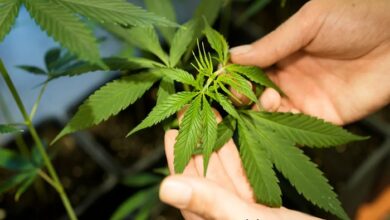Trypophobia: The Fear of Holes

Have you ever felt uneasy or disgusted when looking at a honeycomb, a lotus seed pod, or a sponge? If so, you might have trypophobia, a condition that causes an aversion or fear of irregular patterns or clusters of small holes or bumps.
What is trypophobia?
The term trypophobia was coined by a participant in an online forum in 2005. It is derived from the Greek words “trypo” meaning “hole” and “phobia” meaning “fear”. Trypophobia is not officially recognized as a mental disorder by the American Psychiatric Association (APA), but it may be diagnosed as a specific phobia if it causes excessive fear and distress.
People with trypophobia experience mainly disgust when they see trypophobic imagery, such as fruits with small seeds, insects, or skin diseases. Some people may also experience fear, anxiety, or panic attacks. The symptoms can include nausea, trembling, sweating, chills, choking, or dry mouth.
What causes trypophobia?
The exact cause of trypophobia is unknown, but there are several possible explanations. One theory is that trypophobia is a biological revulsion that associates trypophobic shapes with danger or disease. For example, the brain may perceive clusters of holes as signs of parasites, infections, or predators. This theory suggests that trypophobia has an evolutionary basis and is a survival mechanism.
Another theory is that trypophobia is a result of the brain’s difficulty in processing holey patterns. The brain may use more energy and oxygen to process these patterns, which triggers feelings of discomfort or distress. This theory suggests that trypophobia is related to visual perception and cognitive processing.
A third theory is that trypophobia is a feature of obsessive-compulsive disorder (OCD). People with OCD may have intrusive thoughts or compulsions related to holes or patterns. They may also have a heightened sensitivity to disgust or contamination. This theory suggests that trypophobia is influenced by psychological factors and personality traits.
How is trypophobia diagnosed and treated?
Since trypophobia is not officially recognized as a disorder, there is no standard diagnostic test or criteria for it. However, some researchers have developed questionnaires or scales to measure the severity of trypophobia. For example, the Trypophobia Questionnaire (TQ) assesses the frequency and intensity of trypophobic reactions to various images. The Trypophobia Severity Scale (TSS) evaluates the level of distress and impairment caused by trypophobia.
The treatment options for trypophobia are also limited and not well-studied. However, some possible treatments include:
- Exposure therapy: This involves gradually exposing the person to trypophobic images or objects in a safe and controlled environment. The goal is to reduce the negative emotional response and increase the tolerance to the stimuli.
- Cognitive-behavioral therapy (CBT): This involves identifying and challenging the irrational thoughts or beliefs that trigger or maintain the trypophobic reaction. The goal is to replace them with more realistic and positive ones.
- Medication: This involves taking antidepressants, anti-anxiety drugs, or beta-blockers to reduce the symptoms of fear, anxiety, or panic associated with trypophobia.
- Relaxation techniques: This involves practicing breathing exercises, meditation, yoga, or other methods to calm the mind and body.
Conclusion
Trypophobia is a condition that causes an aversion or fear of irregular patterns or clusters of small holes or bumps. It is not officially recognized as a mental disorder, but it may cause significant distress and impairment for some people. The cause of trypophobia is unclear, but it may be related to biological, cognitive, or psychological factors. The treatment options for trypophobia are limited, but they may include exposure therapy, CBT, medication, or relaxation techniques.




